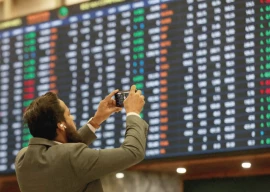
Say’s law suggested that increased domestic incomes created by the production of surplus would increase the domestic demand for the excess production. The doctrine of free trade was designed to lower ideological barriers and thus create foreign demand for the surplus production of England. According to this doctrine, free trade is always helpful to traders. This is based on a very simple idea. If both parties agree to the trade then both must benefit, otherwise they would not agree. Even for individuals, we can easily visualise situations where this is not true. Advertisers can make products appear attractive and seduce people into buying unnecessary products at outrageous prices. At the level of nations, this principle is extremely misleading. European nations were deceived by the free trade theories into allowing English products to penetrate their markets. This adversely affected local producers and led to a recession in European economies. At this point, the great German economist, Friedrich List, understood the game and rose to the defence of Germany. He created the “infant industry” argument, saying that German industry could never develop in free competition with the English which was far ahead. German industry must be protected and nurtured until it could stand on its feet. He argued that the free trade theories work well if the two parties are equals, but not in situations where one has a dominant advantage over the other. His theories were applied with great success. Protection led to the development of German industry until it was able to compete on equal terms with the English. At this point, it became possible and advantageous to remove the trade barriers.
In general, all cases of successful industrialisation in the 20th century have been achieved by protection, together with government leadership and support. Nonetheless, protection is not always beneficial. In the US, Japanese competition was causing immense damage to the US auto industry, which asked for protection. While this was against the free trade ideology of the US, the automakers were sufficiently influential and succeeded in imposing Voluntary Export Restrictions (VER) on Japan. The automobile industry promptly forgot its promises to improve efficiency, and instead made use of the respite from competition to jack up prices and make huge profits from American consumers. At the same time, the Japanese cleverly moved up the value chain, shifting exports to high-end luxury cars so that they would make more profits on the same volume of trade limits under the quota. Consumer prices for cars almost doubled within two years. This is a common pattern seen in protected industries. Instead of using the protection as a breathing space to prepare for the challenge of competition, to acquire strength, protected industries grow fat, lazy and inefficient. Simple-minded arguments for protection and for free trade are both wrong. Development requires intelligent planning, not adherence to platitudes and ideological principles. The goal of overriding importance is the development of local capabilities. It is a general principle that development occurs in response to the right level of challenge. The level of challenge should be just enough to stimulate growth, but not so much as to cause collapse. The challenge should also be increased dynamically in response to the growth of capabilities.
The East Asian countries were well aware of the dilemmas of protection and used a very clever strategy to steer a middle course, avoiding both extremes. They provided a clear timetable along the following lines, adjusted according to the particular circumstances of the industry. The first year could be one of full protection, with a barrier on imports. This was the preparation year. The second year, export-oriented industries would have to export 10 per cent of their products to ensure that they were able to compete in foreign markets. In addition, the tariff barriers against foreigners would also be reduced, on a schedule designed to increase the level of challenge facing the industry. Faced with this clear-cut schedule to achieve competitiveness, industries worked to improve efficiency. It was a matter of survival. They learnt how to manufacture for exports, and how to cut costs, increase efficiency and create quality. In all this process, they also received the help of the government. The successful transition from agrarian to industrial economy bears witness to the success of their strategy.
Published in The Express Tribune, June 6th, 2016.
Like Opinion & Editorial on Facebook, follow @ETOpEd on Twitter to receive all updates on all our daily pieces.



























1714024018-0/ModiLara-(1)1714024018-0-270x192.webp)








COMMENTS
Comments are moderated and generally will be posted if they are on-topic and not abusive.
For more information, please see our Comments FAQ